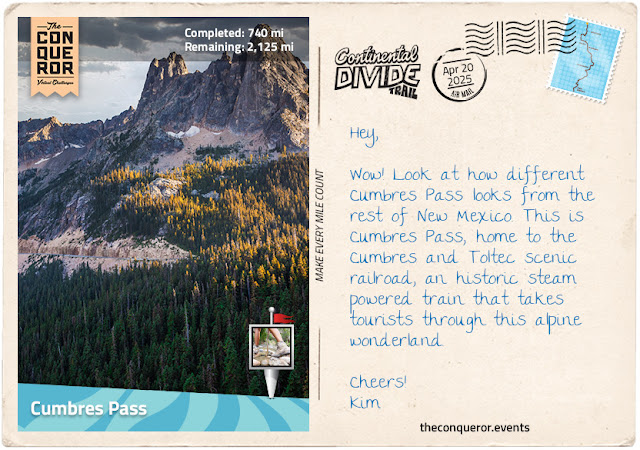This section was moderately challenging, and though the abundant shade made up for it, I was shocked to see large drifts of snow still clinging to the cliffsides. It’s one of the amazing things about hiking this great trail; the landscape, the weather, everything changes so quickly from one day to the next. When you’re walking through a desiccated, blood-red desert valley, it’s hard to imagine that the next day you could be tackling a snowdrift, yet here we are.
I arrived at Cumbres Pass, a high alpine pass that lies over 10,000 ft (3048 m) above sea level. The pass marks the border between New Mexico and Colorado, and is a popular photo opportunity for hikers, as the huge, expansive views capture the contrasting landscapes of both states.
I sat here for a moment, mulling over my time in New Mexico. My thoughts turn
back to O’Keeffe’s painting ‘Rams’ Head, White Hollyhock-Hills’. Now, I think
of how the ram’s skull reflects the fear I had of this remote desert section of
the CDT, of the pitiless power of the landscape, its dangers and hardships
always hovering above me. When I started this journey, I dreaded walking miles
in the baking heat, my throat parched. I worried about getting lost, stepping
on a snake, or simply becoming bored of the barren desert. Instead, I have
discovered a real land of enchantment, an otherworldly landscape both strange
and beautiful. Now, after experiencing the geography, the wildlife, the endless
horizons and the star-flecked nights of this truly unique state, I understand
why O’Keeffe found it so special.










No comments:
Post a Comment
It's so good to see you here . . .